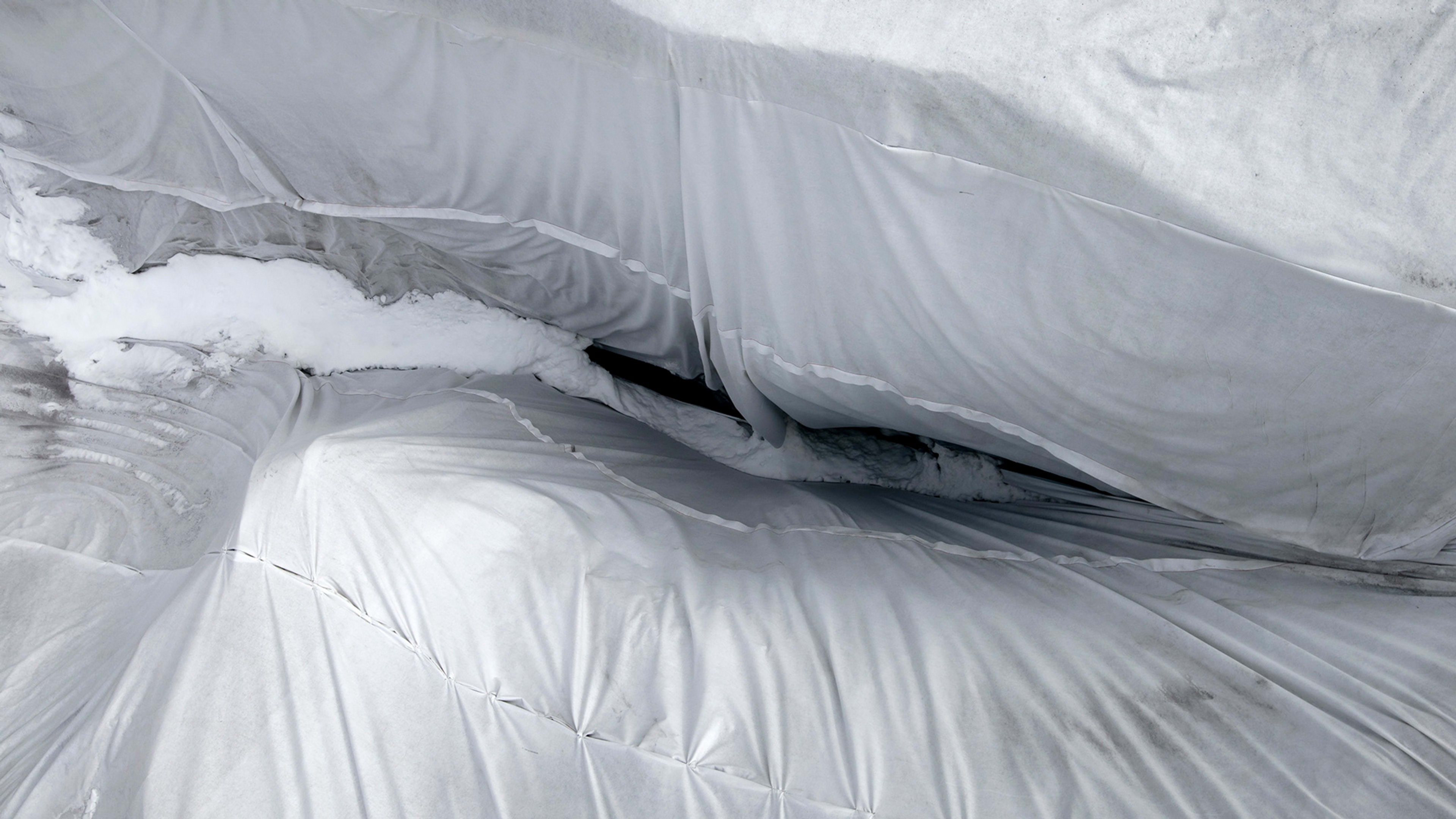In 2012, Stephan Zirwes was skiing at Switzerland’s Saas-Fee glacier ski resort when he noticed something strange. There were people covering parts of the resort’s glaciers with gigantic swathes of white cotton fabric. Puzzled, he asked the workers what was going on. The answer: The textile “prevents melting during summer.”
Laying down such blankets has become common practice in places where glaciers are melting at once-unthinkable speeds. But as Zirwes says, it really doesn’t do much; according to glaciologist David Volken, glaciers lose 3 to 5 inches on a typical summer day–with coverings. Some of the glaciers that Zirwes has visited since childhood are now almost completely gone. Stunned by the view of workers covering the ice sheets, the Stuttgart-based aerial photographer decided to use his craft to document the practice–a dramatic living testimony to climate change’s impact within our lifetimes.
[Image: Stephan Zirwes]
The result is a photo essay and short film on the subject that will be screened at the Melbourne Documentary Film Festival, Los Angeles Cinefest, Aegean Film Festival, and Natur Vision Film Festival. The images give a sense of desperation, which Zirwes himself feels while taking them. The sand and boulders that sit atop the ragged blankets give the impression of a dirty Band-Aid being applied to a severely injured victim. “The glacier looks like a dying patient.” he says. “But you can’t save it with these fabrics. [Death] is unavoidable.”
There are several glaciers in Switzerland that are covered like this every year. Most of them are covered at the beginning of the summer season, Zirwes says, but the Rhône Glacier–the source of the 505-mile-long Rhône river, one of the biggest in Europe–is covered all year around.
[Image: Stephan Zirwes]
Zirwes says that it’s the ski resorts, not the Swiss government, spearheading the operation (and others like it). According to him, their “glacier rescue” operations are intended to help save their businesses. He points out that since the ski lifts are built on the glacier’s ice, the foundations for the lifts are disappearing, and the pillars that hold the ski lift cables are destabilized. Indeed, the economic impact alone will be massive: Switzerland’s tourism economy generated $16.8 billion in 2016 and depends mostly on ski and nature sightseeing. The melting could also deeply affect the economies that depend on the rivers fed by these glaciers.
Global warming is transforming other parts of the landscape, too. “Glacier caves are affected too,” Zirwes says. These ice grottos, carved inside the glaciers, are disappearing or collapsing as temperatures rise. The covers documented in his work may slow down the melt for a few years–but by 2090, experts say there will be almost no glaciers left in Switzerland.
“For me,” Zirwes says, “the wrapping feels like a giant art installation, like a piece by Christo and Jeanne-Claude. Something grotesque, absurd.”
Recognize your brand’s excellence by applying to this year’s Brands That Matter Awards before the early-rate deadline, May 3.











